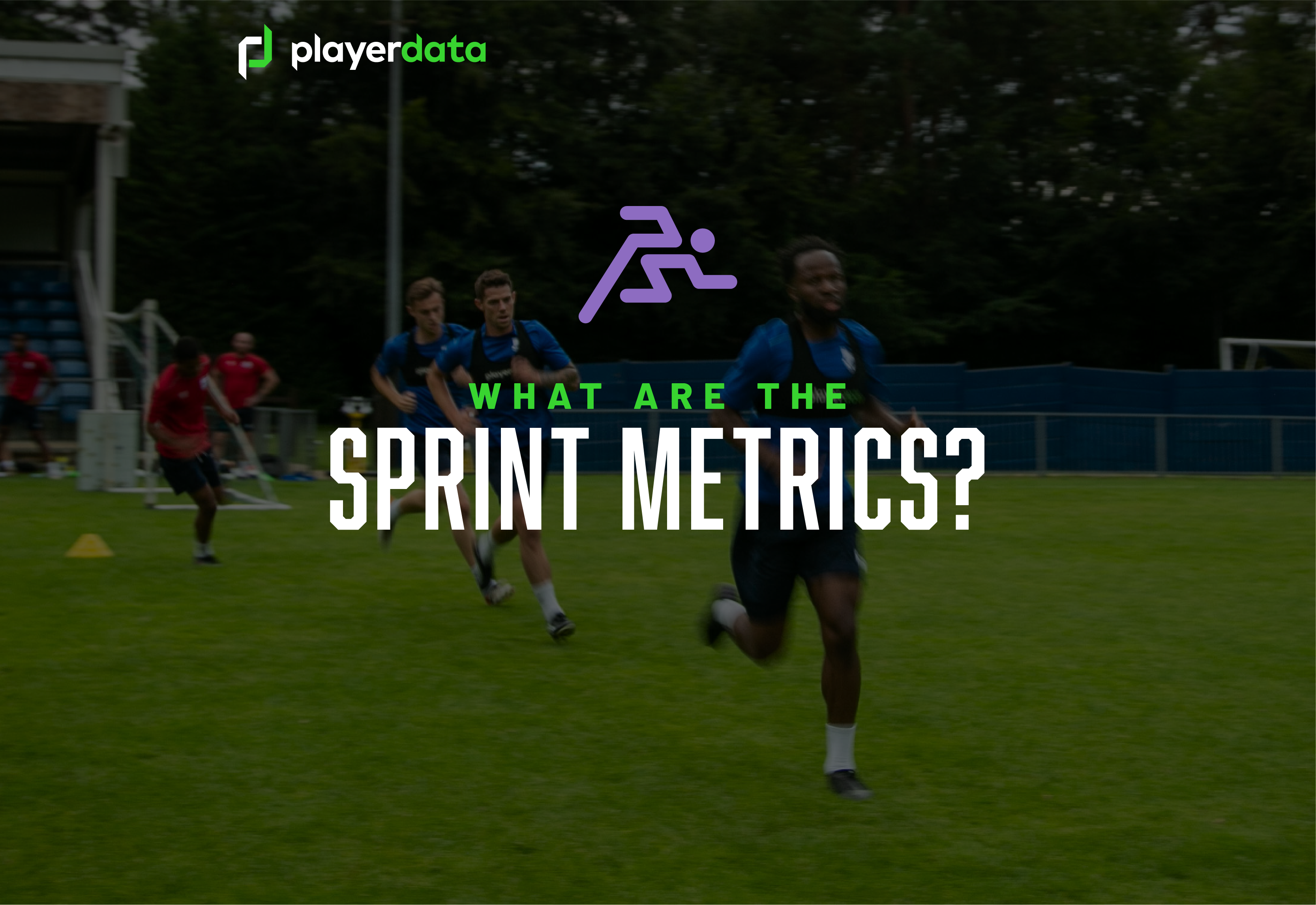What are the Sprint Metrics?
What is sprint distance and number of sprints? How are they measured and Why are they useful?

What Do They Measure?
Sprint Distance- Is the distance recorded that a player has sprinted at their max speed. This is automatically set at 25.1kph but can be customised within teams. In training this is recorded without any restrictions such as pitch or half time. Sprint Distance during matches is measured slightly differently and will only count what sprint distance has been covered on the pitch and during the timings selected.
No. of Sprints- The number of sprints recorded is the number of sprints performed by a player in a training or match session and is dependent on speed and duration . This is recorded when a player performs a sprint above the pre set values (<25.1kph) that lasts over one second.
How to better understand the metric?
Sprint distance is a metric that can be set at a variable value for a teams average max speed. This should be set at 85% of their max speed. This means that the sprinting values are unique for each athlete. This is beneficial for teams so that there is no inaccurate recording of different speed metrics.
Sprint distance can give an insight into how intense a match or training session was. This is especially useful for monitoring a players training load. For example, if all training sessions contain a high sprint distance, this could indicate players are overtraining and may be fatigued on match day and therefore unable to perform at their best. Therefore, tracking sprint distance in training sessions can allow for appropriate training load to ensure players are still doing short bouts of sprinting in training without adding any risk of injury or overtraining.
When analysing sprint distance in matches, sprints performed by players throughout a game typically only make up around 3-8% percentage of the overall total distance covered in a match. They are usually performed for a short duration lasting seconds but are at very high intensity. Nevertheless, these sprints are performed at key points in a game such a gaining possession of the ball or scoring a goal. Therefore by seeing the distances performed in matches coaches can create training sessions that reflect these short bouts of sprinting to ensure players stay match fit.
When coaches and players look at this data it is also important to consider different factors. For example, playing position in a match. Each position has differing physical demands which means players in certain positions may be performing a higher sprint distance than others.
Below is a teams typical week of matches and training. From the graph below you can see their teams average sprint distance for their sessions throughout the week. The start of the week has a high sprint distance (109m) due to this being a match. Mid week there is a drop in sprint distance to allow players to recover properly after a game and ensure they are not fatigued for the end of the week when there is another match. On match day at the weekend players sprint distance has increased again and they can perform optimally due to their correct preparation throughout the week.
Using this information on sprints is a key factor for monitoring training load volume and intensity. To get a fuller understanding of the entire session we can also use this data alongside the other metrics recorded which will be discussed in our upcoming articles.

Figure 1- Graph showing teams average sprint distance over a week of training and matches
What should I be aiming for?
Football Elite Mens
WD 233 ± 98 m
CM 163 ± 85 m
WM 285 ± 111 m
FWD 242 ± 106 m
Football Elite Women’s
DEF 230 ± 33 m
MID 221± 39 m
FWD 191 ± 42 m
Football PlayerData Average (Mens)
COMING SOON
Football PlayerData Average (Women’s)
COMING SOON
Rugby Elite
COMING SOON
Rugby PlayerData Average
COMING SOON
